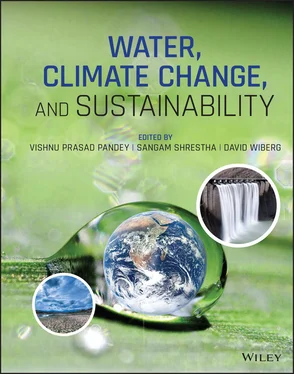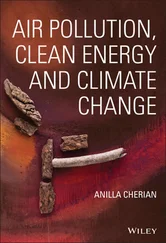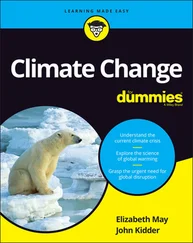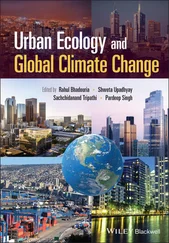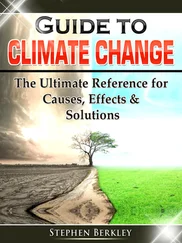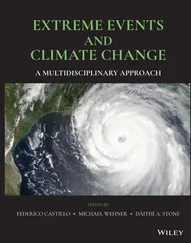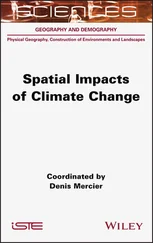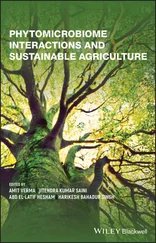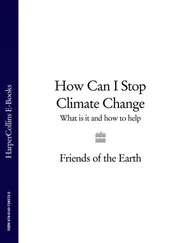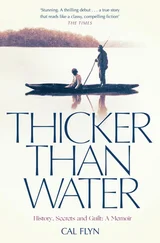Bio‐based systems that can sustain itself on energy supplied by renewable sources such as waste biomass from the process itself and other renewable sources of energy, such as wind and water, can play an important role in achieving the SDGs. Reasonable assessments of the water‐energy nexus in bio‐based systems are fundamental in understanding the effects of resource pressure, the interconnection of both resources, and the delicate balances required to develop sustainable bio‐based systems, and hence contribute to the SDGs. In addition, assessment of bio‐based systems in comparison to petroleum‐based systems is important to evaluate their environmental impacts and ensure the sustainability of the bio‐based systems. Water and energy intensity, efficiency and productivity are some of the indicators that can guide us towards more sustainable bio‐based technologies and help attain the SDGs 6, 7, 12, and 13.
1 Bauder, J. (2019). The Right Strategy for Irrigating Your Canola Crop. Available at: http://waterquality.montana.edu/farm‐ranch/irrigation/other_crops/canola.html(accessed on August 28, 2019)
2 Bennett, A.S. and Anex, R. P. (2008). Farm‐Gate Production Costs of Sweet Sorghum as a Bioethanol Feedstock. Transactions Of The ASABE, 51(2), 603–613.
3 Berger, M., van der Ent, R., Eisner, S., Bach, V., and Finkbeiner, M. (2014). Water Accounting and Vulnerability Evaluation (WAVE): Considering Atmospheric Evaporation Recycling and the Risk of Freshwater Depletion in Water Footprinting. Environmental Science & Technology, 48(8), 4521–4528.
4 Berndes, G. (2002). Bioenergy and water — the implications of large‐scale bioenergy production for water use and supply. Global Environmental Change, 12, 253–271.
5 Biotechnology Innovation Organization. (2017). The Biobased Economy : Measuring Growth and Impacts.
6 Bosch, R., van de Pol, M., and Philp, J. (2015). Policy: Define biomass sustainability. Nature, 523(7562), 526–527.
7 Broeren, M.L.M., Zijp, M.C., Waaijers‐van der Loop, S.L. et al. (2017). Environmental assessment of bio‐based chemicals in early‐stage development: a review of methods and indicators. Biofuels, Bioproducts and Biorefining, 11(4), 701–718.
8 Burnham, A., Wang, M.Q., and Wu, Y. (2006). Development and applications of GREET 2.7 ‐ The Transportation Vehicle‐CycleModel. Argonne, IL.
9 Camargo, G.G.T., Ryan, M.R., and Richard, T.L. (2013). Energy Use and Greenhouse Gas Emissions from Crop Production Using the Farm Energy Analysis Tool. BioScience, 63(4), 263–273.
10 Canakci, M., Topakci, M., Akinci, I., and Ozmerzi, A. (2004). Energy use pattern of some field crops and vegetable production: Case study for Antalya Region, Turkey.
11 Cardone, M., Mazzoncini, M., Menini, S. et al. (2003). Brassica carinata as an alternative oil crop for the production of biodiesel in Italy: agronomic evaluation, fuel production by transesterification and characterization. Biomass and Bioenergy, 25(6), 623–636.
12 Condon, A.G., Richards, R.A., Rebetzke, G.J., and Farquhar, G.D. (2004). Breeding for high water‐use efficiency. Journal of Experimental Botany, 55(407), 2447–2460.
13 Critchley, W., Siegert, K. and Chapman, C. (1991). Water Harvesting, A Manual Guide for the Design and Construction of Water Harvesting Schemes for Plant Production. FAO, Rome. Available at: http://www.fao.org/docrep/U3160E/U3160E00.htm(accessed on August 28, 2019)
14 Cséfalvay, E., Akien, G.R., Qi, L., and Horváth, I.T. (2015). Definition and application of ethanol equivalent: Sustainability performance metrics for biomass conversion to carbon‐based fuels and chemicals. Catalysis Today, 239, 50–55.
15 El‐Gafy, I., Grigg, N., and Waskom, R. (2017). Water‐Food‐Energy: Nexus and Non‐Nexus Approaches for Optimal Cropping Pattern. Water Resources Management, 31(15), 4971–4980.
16 Evans, R.G. (2019). Irrigation Technologies Comparison. Available at: https://www.ars.usda.gov/ARSUserFiles/21563/IrrigationTechnologiesComparisons.pdf(accessed May 2019).
17 FAO. (2016). Aquastat. FAO's Global Information System on Water and Agriculture. Available at: http://www.fao.org/aquastat/en/databases/maindatabase(accessed on 28 August 2019).
18 Fraiture, C. and Berndes, G. (2009). Biofuels and water. In R. Howarth and S. Bringezu (Eds.), Biofuels: Environmental Consequences and Interactions with Changing land Use (pp. 139–152). Gummersbach, German. Available at: https://ecommons.cornell.edu/handle/1813/46196(accessed on August 28, 2019).
19 Gaviglio, A., Bertocchi, M., and Demartini, E. (2017). A Tool for the Sustainability Assessment of Farms : Selection, Adaptation and Use of Indicators for an Italian Case Study.
20 Gerbens‐Leenes, P., Hoekstra, A., and van der Meer, T. (2008). Water footprint of bio‐energy and other primary energy carriers, 29 (Value of Water, Research Report Series No. 29).
21 Goldemberg, J., Coelho, S.T., and Guardabassi, P. (2008). The sustainability of ethanol production from sugarcane. Energy Policy, 36(6), 2086–2097.
22 Hamzei, J., and Seyyedi, M. (2016). Energy use and input–output costs for sunflower production in sole and intercropping with soybean under different tillage systems. Soil and Tillage Research, 157, 73–82.
23 IEA. (2018). World Energy Balances 2018. Available at: https://webstore.iea.org/world‐energy‐balances‐2018(accessed on 28 August 2019).
24 IGBP. (2015). International Geosphere‐Biosphere Programme. Available at: http://www.igbp.net/globalchange/greatacceleration.4.1b8ae20512db692f2a680001630.html(accessed on 28 August 2019).
25 International Organization for Standardization. (2006). ISO 14040:2006 ‐ Environmental management ‐ Life cycle assessment ‐ Principles and framework. International Organization for Standardization.
26 IRENA. (2019). International Renewable Energy Agency (IRENA). Available at: http://www.irena.org/(accessed on May 19, 2019).
27 Iriarte, A., Rieradevall, J., and Gabarrell, X. (2010). Life cycle assessment of sunflower and rapeseed as energy crops under Chilean conditions. Journal of Cleaner Production, 18(4), 336–345.
28 Jessen, H. (2012). Dropping Water Use. Ethanol Producer Magazine. Available at: http://www.ethanolproducer.com/articles/8860/dropping‐water‐use(accessed on August 28, 2019).
29 Kallivroussis, L., Natsis, A., and Papadakis, G. (2002). RD—Rural Development: The Energy Balance of Sunflower Production for Biodiesel in Greece. Biosystems Engineering, 81(3), 347–354.
30 Khan, S., Khan, M.A., Hanjra, M.A., and Mu, J. (2009). Pathways to reduce the environmental footprints of water and energy inputs in food production. Food Policy, 34(2), 141–149.
31 Kraatz, S., Reinemann, D.J., and Berg, W. (2009). Energy Inputs for Corn Production in Wisconsin and Germany. Available at: https://doi.org/10.13031/2013.28850 (accessed on 28 August 2019)
32 Kranz, W.L., Irmak, S., Donk, S.J. va.et al. (2008). Irrigation Management for Corn.
33 Kusek, G., Ozturk, H.H., and Akdemir, S. (2016). An assessment of energy use of different cultivation methods for sustainable rapeseed production. Journal of Cleaner Production, 112, 2772–2783.
34 Langeveld, J.W.A., and van de Ven, G.W.J. (2010). Principles of plant production. In H. Langeveld, J. Sanders, and M. Meeusen (Eds.), The Biobased Economy: Biofuels, Materials and Chemicals in the Post‐oil Era (1st ed., pp. 49–66). Bristol, UK: Earthscan.
35 Langeveld, J.W.A., Dixon, J., and Jaworski, J.F. (2010). Development perspectives of the biobased economy: A review. Crop Science, 50, S–142‐S‐151.
36 Le, P.V.V., Kumar, P., and Drewry, D.T. (2011). Implications for the hydrologic cycle under climate change due to the expansion of bioenergy crops in the Midwestern United States. Proceedings of the National Academy of Sciences, 108(37), 15085–15090.
Читать дальше
